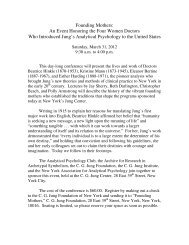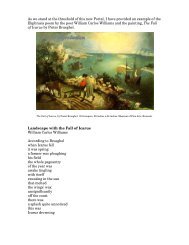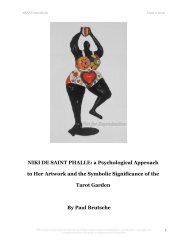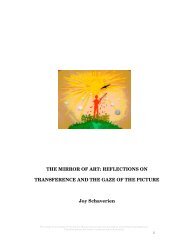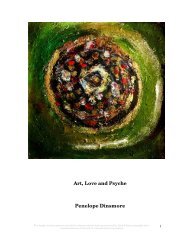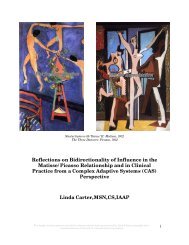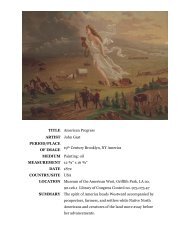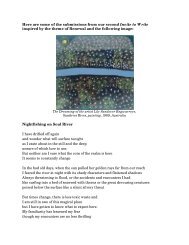Pictorial Space throughout Art History: Cézanne and ... - ARAS
Pictorial Space throughout Art History: Cézanne and ... - ARAS
Pictorial Space throughout Art History: Cézanne and ... - ARAS
Create successful ePaper yourself
Turn your PDF publications into a flip-book with our unique Google optimized e-Paper software.
<strong>ARAS</strong> Connections Issue 2, 2012<br />
Van Gogh <strong>and</strong> <strong>Cézanne</strong>, who were contemporaries, illustrate these issues.<br />
Both were passionate men with fiery artistic temperaments. <strong>Cézanne</strong> was<br />
obsessed all his life with making his paintings “solid like the art in the museums.”<br />
By “solid” he meant plastic. He sometimes worked for years on one painting,<br />
building up pictorial space with painstaking care (see Plate 12). Van Gogh could<br />
finish a painting in half a day. His paintings are passionately expressive but often<br />
structurally weak (see Plate 8). During their Fauvist period, painters such as<br />
Matisse, Derain, Vlaminck, <strong>and</strong> Braque were influenced by van Gogh's passionate<br />
use of color. But in time they turned to <strong>Cézanne</strong> because of his obsession with<br />
pictorial space. His potent influence generated the School of Paris. According to<br />
the criteria of expression <strong>and</strong> plasticity Van Gogh's paintings have aspects of<br />
greatness but are often incomplete.<br />
What about the mystery in a great work of art? Can the transcendent be<br />
explained away by a geometrical device? No. An artist does not deny the ineffable<br />
when he or she discusses technique. The mystery resides in that part of the artist<br />
which the artist expresses via his or her craft, but it also resides in pictorial space<br />
itself. The problem of pictorial space is overwhelmingly complex <strong>and</strong> difficult.<br />
<strong>Cézanne</strong> struggled all his life to reconcile his vision of the motif with a plastic<br />
solution. If the artist resolves the plastic problem then he or she gives birth to a<br />
painting that is itself an individual, alive <strong>and</strong> mysterious.<br />
Is pictorial space a rigid formula which would narrowly dictate how<br />
painting must be? On the contrary, it is independent of style <strong>and</strong> content. It<br />
accommodates paleolithic sculpture, Byzantine icons, <strong>and</strong> cubist <strong>and</strong> surrealist<br />
paintings under the same umbrella. It requires that the artist deal with each<br />
The images in this paper are strictly for educational use <strong>and</strong> are protected by United States copyright laws. 38<br />
Unauthorized use will result in criminal <strong>and</strong> civil penalties.



